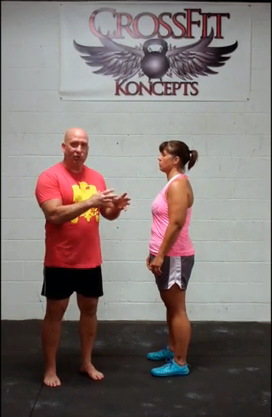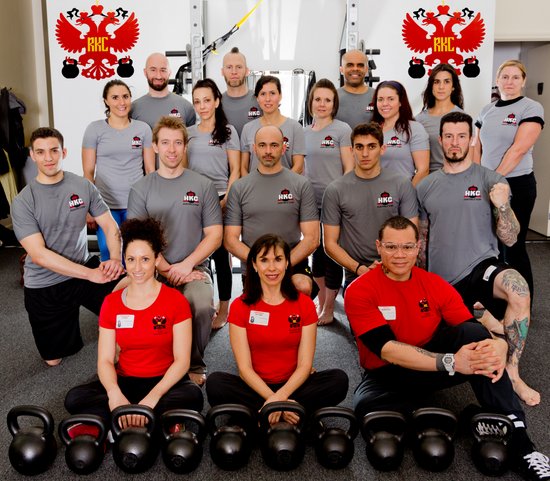 OVERVIEW
OVERVIEW
There are six basic movement patterns : Push, Pull, Squat, Hinge, Carry and Groundwork (i.e. Turkish Get Up, Rolling, etc.). A thorough understanding and utilization of these movement patterns will make you an exceptional athlete, a better rounded coach or trainer, and will allow you to move and grow old gracefully – which are no easy tasks. Tens of thousands of words have been written in regard to Pushing, Pulling, and Squatting; of late the Hinge, Carry and Groundwork have started to get some well deserved attention as well. Among all of the writing there are some real gems of information and guidance as to how to effectively implement the movements and safely execute them. One area that is referenced a lot, but not clearly defined and explained, is the Hinge. The Hinge is the basis for most of the Kettlebell techniques as well as the foundation for the barbell Deadlift. While it is being taught and practiced by athletes and clients every day there are still some issues with executing it safely and efficiently. The following several paragraphs are my attempt to clarify some “gray areas” regarding the Hinge.
A HINGE IS A HINGE… OR IS IT?
There is a lot of confusion as to what a Hinge is and what isn’t. If you spend any time on YouTube (and I do) you will see a wide variety of examples what people are doing that looks like a Hinge but in reality is something completely different. Let’s define the Hinge first and see if we can identify where people go wrong. First – a Hinge is not a Squat (but the Squat has a Hinge component; we’ll get back to this later on). The Squat requires maximum flexion of the Ankle, Knee and Hip and puts the butt parallel or below parallel. Second – the Hinge is not bending over or what some people call “The Sippy Bird”. Bending over requires that the Hip flexes and the head travels forward over the toes. This type of Hinge presents itself with people who are trying to “pull” the Kettlebell or Bar. Third – the Hinge is not done with a straight back – meaning upright, but a flat or neutral spine. When you do the Hinge, the backin its entirety, needs to stay neutral or flat in order to not only protect it but to “stack” is so that you can transfer power through it.
So we have three things that the Hinge isn’t – so what is it? The Hinge is a loading position that allows you to maximally translate energy from the ground via a ballistic extension of the ankles, knees and hips. This ballistic extension can then be translated into movement of the body or a secondary object like a Kettlebell. There are a laundry list of variables that will affect the volatility of your Hinge (and yes it should be a “violent” extension” but I’m going to save that for another RKC Blog posting). What I want you to imagine that the Hinge should be the position you feel that you can get the most drive or explosion out of. Think “jumping over a building in a single bound” and you’ll get what I’m talking about.
LEADING WITH YOUR HEAD
Here’s the nitty gritty about the Hinge: it’s all about initiating, generating power, and transferring power. And guess where the biggest errors occur? You’d think it’s with generating and transferring – but it’s actually on the initiation. You see when most people do the Kettlebell Swing (or Clean or Snatch for that matter) they explode out of the Hinge position leading with their torso and head (back to that Sippy Bird” thing). Don’t believe me? Then try the simple test outlined in the video below. The first demonstration shows the athlete trying to pull their way out of the Hinge position. This position is so weak that light pressure on the head stalls the whole body. The second demonstration shows the athlete driving up from the ground using their legs and finishing with a powerful Hinge movement. The presence of my hand on the top of the athletes head doesn’t deter them at all.
What you are going to find is that many of your athletes and clients are paying lip service the Hinge but are actually generating power through their lower back and acceleration of their head. It’s going to startle many people when you are able to stop them dead in their track with gentle pressure on their head; careful when you try to demonstrate this because you can easily tweak someone’s neck or back if they try to “fight” their way through the obstruction. Here’s the thing – you can train the Hinge in this manner and get reasonably strong and stay injury-free for a long time. But… and it’s a big one… you are not going to be able to generate as much power as you could if you don’t learn to initiate and follow through with the Hinge from the ground up.
WISDOM FROM A MASTER
Marty Gallagher is a master in the realm of strength. He has made a career out producing world record holding athletes, writing about the iron game (have you read his opus “The Purposeful Primitive”?), and working with Tier One Special Operators. To say he knows what it takes to be strong and get strong would be an understatement. I’ve had the pleasure of sitting down and talking about strength training with Marty on a couple occasions and I always come away with insights that are light years away from where I currently am. For instance, we were talking about Barbell Deadlifting (DL) and how many of the current crop of DL’ers you see start way too high and are facing down when they initiate the movement. Sure, you can get the bar moving there but you’re never going to reach your potential using that technique; not to mention you are putting unnecessary stress and strain on your back. According to Marty the best “pulling position” for the Barbell DL is the shins and the torso at almost the same angle – this allows you at to drive off the ground with the legs (squatting) and then transferring the load into the Hinge to complete it. Once again – the Hinge completes the movement; it’s not the whole movement.
So how does this apply to the Hinge in regards to the Kettlebell? Directly! Do not pass Go, do not collect five hundred dollars! While pulling a heavy barbell Deadlift and performing a heavy Kettlebell Swing may look radically different they have a lot of similarities (and several differences). If you look at the Hinge from this perspective it will radically change how much more force you can generate (using the biggest muscles and drivers in your body) and will lessen your reliance on using your arms to move the Kettlebell. Several things that make a difference between the two are the position of the load during execution. The barbell has no choice but to stay in front of the shins during the movement; this will change not only the loading but also affect the angles of all of the major joints. With the Kettlebell you have much more latitude for positioning the load (those pesky shins don’t get in the way) and you can put it between and behind your feet to allow a more direct and powerful loading of the hips, glutes and hamstrings.
Don’t let my explanation of the positioning on the barbell Deadlift and Kettlebell Swing confuse you! The point I am trying to make is that when you are practicing a technique that utilizes the Hinge the key factor is how you are initiating the movement. Are you driving through the Hinge from the ground up or are pulling through the Hinge with your arms and head? There is a HUGE difference and the results are profound…
CONCLUSION
What I’ve outlined above may be common knowledge to some and, even after a video and over a thousand words, will still be a mystery to others. That’s okay! Watch the video, re-read the above post and see if you can work out the specifics on your own or via experimenting with your athletes or clients. The purpose behind the test I demonstrated is not to frustrate or confuse you – it’s to show you a simple and effective way to ensure that your athletes or clients are using the safest and most effective way to generate power for Kettlebell ballistic techniques.
Thanks for your time and attention and I look forward to your feedback and questions!
***
About Michael A. Krivka, Sr. – Senior RKC: Michael A. Krivka, Sr. is a Washington, DC native who has been involved in Kettlebell training for over a decade and is currently an RKC Team Leader and member of the RKC Board of Advisors and the RKC Leadership Team under Dragon Door (where he has been listed as one of the top reviewed RKC’s in the world for the last five years). He is also the author of a bestselling eBook entitled “Code Name: Indestructible” and is in the process of finishing up several other eBooks on Kettlebells, body weight, and the integration of other tools into an effective strength and conditioning program. Mike has traveled extensively throughout the United States teaching Russian Kettlebells to military (USMC, USN, USA and USAF) and law enforcement personnel (FBI, DEA, USSS and CIA)… read more here.






